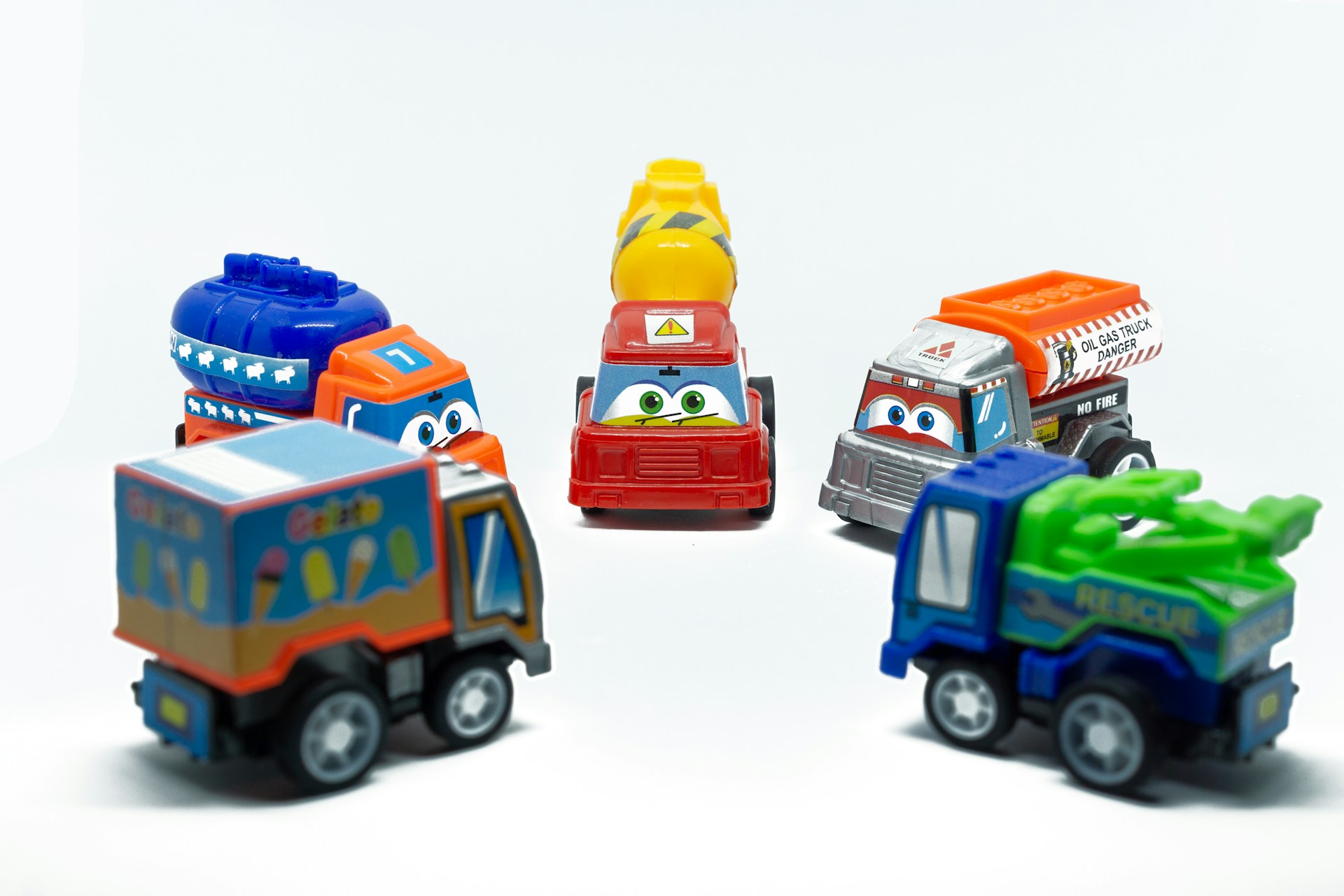AI Brand-Safety Checklist for Children's Toys Ecommerce

Every AI-powered interaction with young shoppers carries profound responsibility—from protecting personal data to preventing inappropriate content exposure. With 7 out of 10 parents demanding more safety measures for children's online shopping, toy retailers face an unprecedented challenge: deploying AI that engages young audiences while maintaining absolute safety standards. Envive's AI sales agent addresses this challenge through proprietary safety protocols that maintain zero compliance violations while creating personalized shopping experiences families trust.
Key Takeaways
- The Children's Online Privacy Protection Act (COPPA) requires verifiable parental consent before collecting personal information from children under 13.
- ASTM F963 applies to toys intended for children under 14 years. Toys that are 'children's products' (12 and under) must be third-party tested by a CPSC-accepted lab and certified
- AI systems can form parasocial relationships with children, leading them to share personal information they wouldn't normally disclose to strangers
- U.S. Customs and CPSC seized nearly 1.6 million dangerous toys at the border in fiscal year 2024, including 100,000 with unsafe lead levels
- Some connected devices (e.g., AR/VR headsets marketed to teens) can collect eye-tracking data; many connected toys collect audio, video, and location. Treat all such data as sensitive and protect accordingly
- Effective AI brand safety requires layered approaches combining automated filtering, human oversight, and transparent parental controls
Understanding Toy Safety Standards for Online Retail
Your AI systems operate within a complex regulatory framework where traditional toy safety meets digital privacy law. The Consumer Product Safety Commission (CPSC) enforces physical product safety while the Federal Trade Commission (FTC) oversees digital interactions and data collection. This dual oversight creates unique challenges that generic AI cannot navigate safely.
Federal Safety Requirements
The foundation of toy safety begins with mandatory standards that every retailer must enforce:
- ASTM F963 Compliance: All toys must meet mechanical, physical, and flammability requirements
- Age Grading Standards: Products must carry appropriate age recommendations based on developmental appropriateness
- Lead Content Limits: Total lead content cannot exceed 100 ppm in accessible parts
- Small Parts Warnings: Small parts are prohibited in toys intended for children under 3. For toys intended for ages 3–6 that contain small parts, a choking hazard warning label is required
- Testing Certificates: Children's products require periodic third-party testing at least annually, even without design or manufacturing changes
The CPSC has accepted more than 700 laboratories worldwide to perform required testing, and companies must maintain required testing records for at least 5 years. Your AI must understand these requirements to provide accurate product information and safety guidance.
Age-Appropriate Guidelines
Children's limited knowledge and maturity require special protections that AI must respect. The CARU emphasizes that existing guidelines apply to AI technologies with additional safeguards needed. When implementing AI for different age groups:
- Under 3 years: Focus on sensory development toys without small parts
- Ages 3-5: Educational content with clear parental involvement
- Ages 6-8: Limited complexity with safety reminders
- Ages 9-12: More independence but maintained privacy protection
- 13 and older: Graduated permissions with ongoing safety measures
AI Tools for Product Description Compliance
Product descriptions generated or modified by AI must maintain strict compliance with both safety regulations and advertising standards. The FTC's authority under Section 5 applies to all AI-generated content, requiring accuracy and appropriate disclosure regardless of technology used.
Automated Safety Label Generation
Your AI must generate consistent, compliant safety information across all product listings:
Product pages should include:
- Age recommendations with developmental justification
- Choking hazard warnings where applicable
- Material composition and country of origin (Show CoO/materials to mirror labeling, but verify marketplace-specific listing rules; legal marking remains on the product/packaging)
- Assembly requirements and adult supervision needs
- Battery warnings and specifications
- Care instructions and cleaning guidelines
Compliance Language Templates: Create pre-approved templates that AI can adapt while maintaining legal requirements. For example, instead of allowing freeform generation, provide structured options:
- "Recommended for ages [X] and up due to [specific developmental reason]"
- "Adult assembly required - contains small parts during construction"
- "This product meets all CPSC safety requirements for [age group]"
Envive's Copywriter Agent ensures product descriptions maintain compliance while adapting to each customer's needs, aware and always learning from safety requirements and parental concerns.
FTC Guidelines for AI-Generated Content
Ensure content is not deceptive. Disclose material connections and endorsements, avoid misleading formats, and don't misrepresent a bot as a person. If the format could mislead, disclose or redesign to avoid deception. Key requirements include:
- Transparency about AI involvement in product recommendations where it could mislead
- Avoiding deceptive practices in AI-generated reviews or testimonials
- Clear disclosure of data collection and usage practices
- Age-appropriate language that children can understand
- If personalization involves collecting personal information from a child under 13, provide COPPA-compliant parental notice and obtain verifiable parental consent before collection
- The FTC opened an inquiry into chatbots acting as ‘companions,’ including risks to kids/teens—factor this into safety reviews.
Free AI Tools for Toy Safety Documentation
While enterprise solutions offer comprehensive protection, smaller retailers can begin with free tools that provide basic safety capabilities:
Document Generation Tools
ChatGPT and Claude for Safety Documentation:
- Generate safety instruction templates
- Create age-appropriate warning labels
- Draft parental consent forms
- Develop safety testing checklists
Implementation Guidelines:
- Always verify AI-generated safety content against official CPSC requirements
- Never rely solely on AI for final safety determinations
- Use as drafting tools only, with human review mandatory
- Maintain version control for all safety documentation
Safety Testing Trackers
Free tools can help organize safety compliance but cannot replace official testing:
Google Sheets Templates:
- Track testing dates and certificates
- Monitor recall notices
- Document supplier compliance
- Manage age grading decisions
Microsoft Forms for Data Collection:
- Gather incident reports
- Collect customer safety feedback
- Document quality control checks
- Track corrective actions
Remember that free tools lack the proprietary 3-pronged approach that ensures comprehensive protection. They should supplement, not replace, robust safety systems.
Amazon-Specific Requirements for Girl Toys and Boy Toys
Amazon's marketplace has unique requirements beyond general safety standards, particularly in how products are categorized and presented. While the platform maintains traditional gender categories, modern AI must balance marketplace requirements with inclusive shopping experiences.
Category-Specific Guidelines
Amazon's Toy Categories require:
- Accurate ASIN classification for safety filtering
- Complete product bullets highlighting safety features
- High-resolution images showing age labels clearly
- Backend search terms that don't violate policies
- Proper brand registry to prevent counterfeits
Gender-Neutral Considerations: Your AI should recognize that toy preferences aren't strictly gendered while still functioning within Amazon's existing structure:
- Suggest products based on interests, not assumptions
- Use inclusive language in descriptions
- Highlight STEM toys across all categories
- Focus on developmental benefits over stereotypes
Listing Optimization Rules
Amazon's algorithm considers safety compliance in ranking:
- Complete safety information improves discoverability
- Missing age grades can suppress listings
- Safety-related customer questions affect performance
- Negative reviews about safety severely impact visibility
- Proper categorization enables parental controls
- Incomplete age-grading/safety bullets can suppress discoverability; keep ASIN safety fields complete
According to Amazon Advertising research, 82% of consumers say it's important that content surrounding online ads is appropriate, making brand safety essential for marketplace success.
AI-Powered Search Safety for Toy Discovery
Search represents the first point of contact where safety measures must activate. Envive's Search Agent understands intent and transforms discovery while maintaining safety protocols, ensuring children never encounter inappropriate products or content.
Protecting Young Shoppers
Implement multi-layer protection in search functionality:
Content Filtering Mechanisms:
- Block inappropriate search terms automatically
- Redirect questionable queries to parent-safe alternatives
- Flag searches requiring adult verification
- Prevent access to age-inappropriate products
- Monitor for concerning patterns indicating unsupervised access
Smart Age Detection:
- Analyze search patterns indicating child users
- Adjust result presentation for younger audiences
- Simplify language in product descriptions
- Emphasize visual over text information
- Require additional verification for certain categories
Smart Filtering Systems
Advanced AI search must balance discovery with protection:
Intent Recognition Protocols:
- Distinguish between child and adult search patterns
- Identify educational versus entertainment intent
- Recognize gift-shopping versus self-shopping behaviors
- Detect safety-related search queries
- Prioritize products with complete safety documentation
Results Optimization:
- Surface age-appropriate options first
- Highlight safety certifications prominently
- Group products by developmental stages
- Include safety information in search previews
- Enable quick parental review features
Customer Support AI for Toy Safety Questions
Support interactions often involve critical safety concerns requiring immediate, accurate responses. Envive's CX Agent provides great support that feels invisible, solving issues before they arise while maintaining strict safety protocols.
Handling Safety Concerns
Priority Safety Scenarios:
- Recall inquiries requiring immediate accurate information
- Choking hazard concerns from parents
- Age-appropriateness questions for gifts
- Chemical safety and material composition queries
- Assembly problems creating safety risks
- Missing or damaged safety components
Response Protocols: Create decision trees for common safety scenarios:
- Identify safety concern severity
- Provide immediate applicable guidance
- Escalate to human agents when needed
- Document all safety-related interactions
- Follow up on reported incidents
- Update knowledge base with new concerns
Parent Communication Protocols
Parents expect instant, authoritative responses about their children's safety. Temple University's Kathy Hirsh-Pasek notes that the best toys should be 90% child-driven activity and 10% toy functionality, emphasizing parental understanding of appropriate play.
Essential Communication Elements:
- Clear, jargon-free safety explanations
- Links to official safety documentation
- Proactive recall notifications
- Age-specific guidance for product selection
- Instructions for reporting safety concerns
- Educational content about toy safety standards
Multi-Platform Brand Safety: Walmart, Macy's, and Beyond
Each marketplace has distinct safety requirements that AI must navigate seamlessly. Cross-platform selling requires adaptive AI that maintains consistent safety standards while meeting platform-specific requirements.
Platform-Specific Requirements
Walmart Marketplace:
- Requires Safety Data Sheets for certain categories
- Mandates specific warranty disclosures
- Enforces strict counterfeit policies
- Reviews safety compliance before approval
Target Plus:
- Emphasizes brand safety in family categories
- Requires enhanced age-grading information
- Monitors customer safety feedback closely
- Prioritizes established safety-conscious brands
Macy's and Nordstrom:
- Focus on premium toy brands with established safety records
- Require additional gift-packaging safety considerations
- Emphasize seasonal compliance for holiday toys
- Maintain stricter vendor accountability standards
Universal Safety Standards
Despite platform variations, maintain consistent safety protocols:
- Standardize safety documentation across all channels
- Implement unified age-grading systems
- Maintain single source of truth for safety data
- Coordinate recall responses across platforms
- Ensure consistent safety messaging everywhere
Building Your AI Tools List for Toy Retail
Selecting appropriate AI tools requires careful evaluation of safety capabilities alongside business functionality. The FTC has signaled increased scrutiny of AI claims and practices, including guidance to avoid deceptive AI claims and protect children from stealth advertising.
Essential vs. Optional Tools
Non-Negotiable Safety Tools:
- COPPA compliance management systems
- Real-time content moderation
- Age verification mechanisms
- Safety documentation generators
- Recall notification systems
- Incident reporting platforms
Enhancement Tools for Growth:
- Personalization engines with privacy protection
- Visual search with safety filters
- Predictive safety analytics
- Automated translation with safety term accuracy
- Review monitoring for safety mentions
Implementation Roadmap
Phase 1 (Weeks 1-2): Foundation
- Audit current safety compliance status
- Document all safety-critical processes
- Identify regulatory requirements by market
- Map data collection touchpoints
Phase 2 (Weeks 3-4): Tool Selection
- Evaluate AI vendors for safety capabilities
- Review privacy and security certifications
- Test safety feature effectiveness
- Verify COPPA compliance features
Phase 3 (Weeks 5-6): Integration
- Configure safety rules and filters
- Upload product safety documentation
- Train AI on safety vocabulary
- Establish escalation protocols
Phase 4 (Weeks 7-8): Testing
- Simulate safety scenarios
- Verify age-detection accuracy
- Test parental control features
- Validate compliance outputs
Real-Time Compliance Monitoring with AI
Continuous monitoring prevents violations before they impact customers or trigger regulatory action. Envive's Sales Agent demonstrates this with zero compliance violations through its proprietary safety approach, handling thousands of conversations flawlessly.
Setting Up Monitoring Systems
Automated Alert Configuration:
- Recall notice integration from CPSC databases
- Keyword monitoring for safety concerns
- Unusual data collection pattern detection
- Cross-reference against violation databases
- Track compliance metric trends
Performance Dashboards: Create real-time visibility into safety performance:
- Compliance violation rate (target: 0%)
- Safety-related query response time
- Escalation frequency and resolution
- Parent satisfaction with safety responses
- Age-verification success rates
Response Protocols
When safety issues arise, response speed matters:
- Immediate Actions (0-1 hour):
- Remove affected products from all recommendations
- Notify currently shopping customers
- Alert human safety team
- Document incident details
- Short-term Response (1-24 hours):
- Contact previous purchasers
- Update AI knowledge base
- Coordinate with platforms
- Prepare public communications
- Long-term Resolution (24+ hours):
- Implement permanent fixes
- Update training materials
- Review similar products
- Strengthen prevention measures
Age-Based Shopping Experiences Using AI
Personalization must respect developmental stages while maintaining absolute safety. Smart toys can collect video, audio, and location data, making age-appropriate data handling critical.
Personalizing by Age Group
Toddlers (1-3 years):
- Visual-heavy interfaces with minimal text
- Parent-guided navigation only
- No data collection from child
- Focus on sensory and motor skills
- Simple safety messaging for parents
Preschoolers (3-5 years):
- Picture-based product discovery
- Parent approval for all actions
- Educational content integration
- Basic safety concepts introduction
- Limited session durations
School Age (6-12 years):
- Graduated independence with controls
- Age-appropriate search filtering
- Safety education integration
- Wish list features with parent review
- Time-limited browsing sessions
Parent-Child Account Management
Effective family accounts balance convenience with protection:
- Parent dashboard with full visibility
- Child profiles with age-based restrictions
- Approval workflows for purchases
- Shared wish lists with safety flags
- Activity reports and screen time tracking
- Emergency lock-down capabilities
Frequently Asked Questions
What AI tools are essential for toy safety compliance on Amazon?
Essential AI tools for Amazon toy safety include automated compliance checkers that verify age grading, safety labeling, and category requirements. These must integrate with Amazon's API to monitor ASIN compliance, track safety-related customer feedback, and manage listing optimization. CPSC requirements mandate specific testing and documentation that AI can help organize but not replace. Focus on tools that automate documentation management, generate compliant product descriptions, and monitor for recall notices while maintaining human oversight for final safety determinations.
How can free AI tools help with toy product descriptions?
Free AI tools like ChatGPT and Claude can draft initial product descriptions that highlight safety features and age appropriateness, but require careful human review for compliance accuracy. These tools excel at generating structured content templates, translating safety warnings, and creating age-appropriate language. However, they cannot verify regulatory compliance or replace official safety testing. Use them to streamline content creation while maintaining strict human oversight for all safety claims and ensuring alignment with ASTM F963 standards required for children's toys.
What are the main differences in safety requirements between platforms?
Amazon emphasizes complete ASIN compliance and detailed safety bullets, while Walmart requires Safety Data Sheets for specific categories. Target Plus prioritizes established brands with proven safety records, and specialty retailers like Macy's focus on premium products with enhanced gift-safety considerations. Despite variations, all platforms must comply with federal CPSC standards. The key difference lies in documentation requirements, category restrictions, and how safety information is presented to consumers. Successful multi-platform selling requires adaptive AI that maintains consistent safety standards while meeting each platform's unique specifications.
How do I ensure my AI-generated content meets FTC guidelines for children's toys?
Ensure AI-generated content includes clear disclosures about AI involvement where it could mislead, avoids deceptive practices, and uses age-appropriate language children can understand. The FTC's Section 5 authority applies regardless of technology, requiring truthful, non-deceptive content. Implement validation layers that verify all claims against actual product specifications, include required safety warnings, and maintain transparency about data collection. Regular audits of AI outputs, combined with human review for safety-critical content, ensure ongoing compliance with evolving FTC guidelines for children's digital experiences.
Which AI tools can monitor real-time compliance violations?
Envive's interconnected agents provide comprehensive monitoring across search, sales, and support touchpoints, maintaining zero compliance violations through proprietary safety protocols. Effective monitoring tools must integrate with CPSC recall databases, track safety-related customer feedback, and flag potential violations before they escalate. Look for platforms that offer automated alert systems, compliance dashboards, and audit trails. The best solutions combine automated detection with human escalation protocols, ensuring rapid response to safety concerns while maintaining detailed documentation for regulatory purposes.

Other Insights

Partner Spotlight: Andrea Carver Smith

Is AI a bubble — or the beginning of durable value?

Partner Spotlight: Siara Nazir
See Envive
in action
Let’s unlock its full potential — together.






